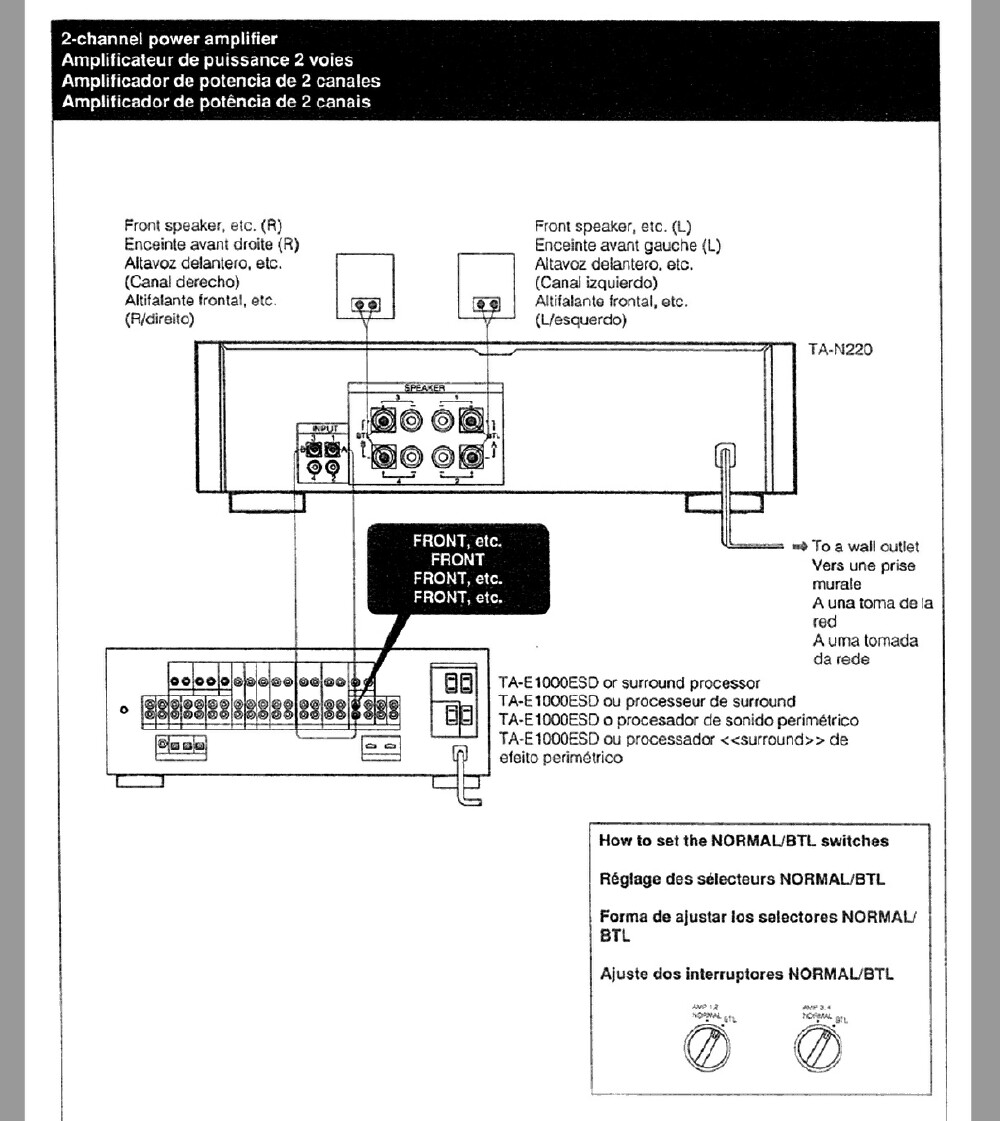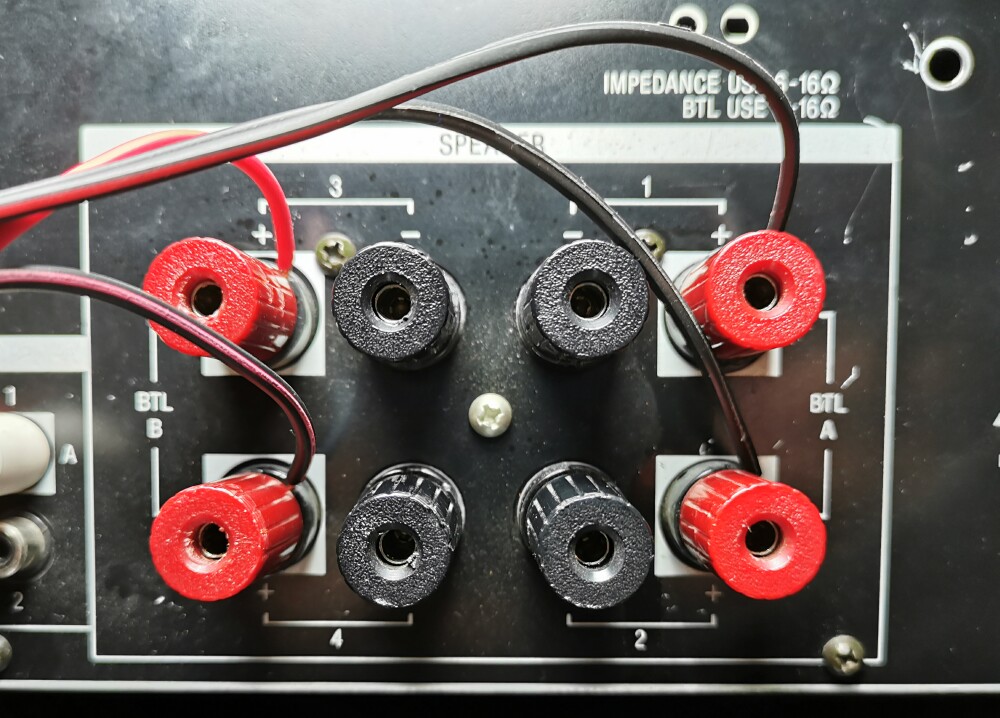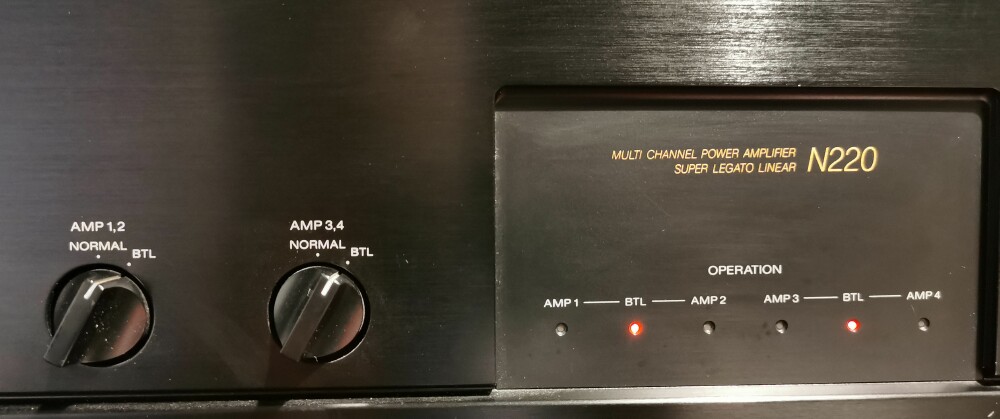Sony TA-N220
A lesson in audio humility
|
I had bought this power amplifier a few years ago because a fellow
audiophile told me that it is a very good amp that has been 'forgotten'
because it does not carry the 'ES' badge and has a tricky connection
layout. I didn't think much about this complexity, having owned so many
power amps in my life, they all the same, blah blah....
I bought a
TA-N220 in very good condition with wooden sides for a very convenient
price in Germany and had it shipped in Italy: then I connected it to my
E2000ESD preamplifier in the system that I listen to in my studio. It
takes the inputs of the PC, DAB, web radio etc, and the N220 had to move a
pair of brilliant Canton loudspeakers and a pair of small Sony bookshelf
speakers.
I was surprised to see that it didn't work: the sound
coming out of the usually extrovert Cantons was dull, flat. No dynamics.
Plus it was annoying to change the input jacks to swap amp 1/2/3/4
channels and when I connected it to my tweaked SS-G1 MkII speakers, that
when powered by any other amp display a really spectacular soundstage, it
sounded flat all the same: it was a delusion. I wondered why people spoke
so highly about this unexciting power amp. I disconnected it and put it
away.
Yesterday (June 2020) I was browsing through the many, many
wonderful pages of users manuals in the endless HifiEngine site and
stumbled accidentally on the
TA-N220 page. I immediately downloaded its users manual and read
it....boy, was I wrong! I had connected the speakers the 'normal' way,
forgetting that this amplifier was designed by Sony engineers to provide
power to 2, 3 or 4 speakers according to the user's needs, but every
solution needs a proper wiring.
|
 |
As the drawing above shows, if you want to use only the 2 front
speakers for audiophile listening, you don't have to connect their + and -
wires as usual, respectively to each set's red and black rear connectors,
but to the outside red terminals, then you have to turn the front switches
on the 'BTL' position (see photo below). By the way, BTL means 'Bridge-Tied
Load' and it's quite interesting to understand how this mode works
|
 |
"The two channels of a stereo amplifier are fed the same monaural
audio signal, with one channel's electrical polarity reversed. A
loudspeaker is connected between the two amplifier outputs, bridging the
output terminals. This doubles the available voltage swing at the load
compared with the same amplifier used without bridging."
|
 |
The result? The correct wiring changed completely the character of the
220! Now that I have connected properly my upgraded SS-G1 MkIIs and it's
working in its natural BTL mode, it is a great-sounding double-mono
amplifier that really sings, with full low frequencies and extremely good
highs.
There is a lesson here: always read carefully the user's
manual, at least for all the equipment that has some quirky/unusual
feature (and the TA-N220 is quirky indeed with its 4 amplification
channels and its BTL mode...) otherwise you'll risk to get it all wrong
and fail to appreciate some hidden qualitites of the equipment that you
have just bought.
Once I did my homework, the TA-N220 became a
great buy: a fairly inexpensive but splendid power amplifier that confirms
once again that Sony makes great-sounding, often underrated and sometimes
misunderstood audio equipment.
|
hifiengine.com is the best site for Sony manuals
|